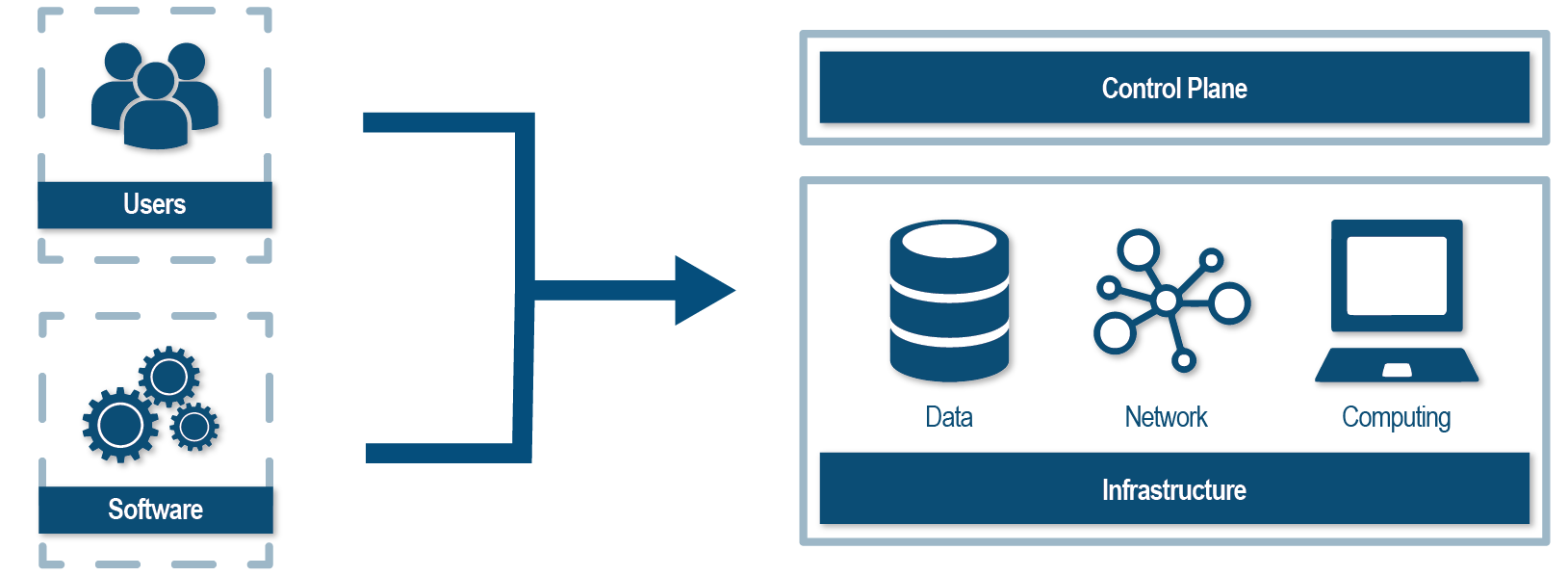Software Defined Infrastructure
Software Defined Infrastructure (SDI) is the collection of computing infrastructure which is controlled via software and extendable using Application Program Interfaces (APIs), rather than with manual operator intervention. Administrators of SDI use code to declare requirements and actions to be performed. This is independent of any specific hardware, abstracting out hardware uniqueness. Software defined infrastructure’s code model enables traceability for security and chain of trust via the ability to log and audit all changes.
Mission Impact
- Increase speed the delivery of infrastructure to users
- Increase the knowledge of the current state of the infrastructure
- Reduce downtime by enabling effective testing of infrastructure changes prior to deployment
- Enhance disaster recovery through repeatability of infrastructure deployments
- Ability to quickly react and adapt to security events
- Agility to adapt infrastructure to changing business needs
- Cost savings due to increased utilization of infrastructure
Features
- Decoupling of physical infrastructure from business needs
- Infrastructure deployment
- Infrastructure automation
- Security responsiveness
- Standardization of infrastructure by abstracting out the physical layer
- Ability to perform security audit and model infrastructure
- Self-service portal for users to request IT infrastructure
Use Cases
- Any organization with an internal IT footprint looking to increase their utilization and responsiveness
- Organizations struggling with requests for infrastructure for new projects
- Organizations with challenges maintaining the configuration of their infrastructure
- Organizations which need the ability to rapidly stand up and destroy environments, such as for testing
Infographic

Considerations
- Implementing software defined infrastructure without a suitable software change process will result in a higher rate of errors.
- A test environment is needed to validate changes before deployment.
- While applicable to all environments, the most benefit is realized in larger environments.
- Without a chargeback model, users may consume significantly more resources than before.
ValidaTek's Process
- Identify infrastructure needs and key business drivers
- Identify current software development and change deployment processes
- Identify current infrastructure capabilities
- Develop capacity plan, infrastructure architecture, and any needed software development and change control processes
- Deploy infrastructure automation, whether by adding to the existing environment or through a new build
- Create automation processes to tie new deployment to existing infrastructure (e.g., networking gear, firewalls, and storage)
- Provide training on the new system and process to both administrators and users
- Ensure monitoring and capacity management are available and functioning as expected
For More Information
Email: [email protected]
Phone: 703-972-2272




